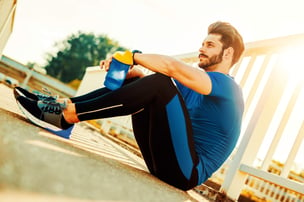 When it comes to athletic performance and recovery, one advancement in recent years has been compression clothing. From professional athletes to fitness enthusiasts, compression garments have become a staple in many wardrobes. But what exactly is the science behind compression clothing, and how does it impact our bodies during exercise and recovery? Let's dive in and explore the world of compression wear.
When it comes to athletic performance and recovery, one advancement in recent years has been compression clothing. From professional athletes to fitness enthusiasts, compression garments have become a staple in many wardrobes. But what exactly is the science behind compression clothing, and how does it impact our bodies during exercise and recovery? Let's dive in and explore the world of compression wear.
The Science Behind Compression Clothing
Compression clothing works by applying pressure to specific parts of the body, typically the limbs, to improve blood circulation and lymphatic flow. This increased circulation can have several benefits for both performance and recovery.
- Enhanced Blood Flow: During exercise, muscles require a steady supply of oxygen-rich blood to perform at their best. Compression garments help to improve blood flow by constricting blood vessels, which in turn increases the velocity of blood as it circulates through the body. This enhanced blood flow can lead to improved endurance, reduced fatigue, and enhanced overall performance.
- Reduced Muscle Oscillation: Compression clothing has an ability to reduce muscle oscillation, or the small vibrations that occur in muscles during movement. By providing external support to muscles, compression garments help stabilize them, reducing the amount of energy expended during exercise and minimizing muscle fatigue.
- Improved Recovery: By increasing blood flow and reducing muscle oscillation, compression garments can help to speed up the recovery process following intense exercise. This can lead to reduced muscle soreness and stiffness, allowing individuals to bounce back more quickly and continue training at a high level.
- Temperature Regulation: Some compression garments are designed to help regulate body temperature during exercise. By wicking away sweat and moisture from skin, these garments can keep the body cool and comfortable and prevent overheating during intense workouts.
Selecting Compression Gear
When selecting compression clothing, it's important to consider factors such as fit, material, and intended use. Compression garments should fit snugly against the skin without being uncomfortably tight, and they should be made from breathable, moisture-wicking fabrics to maximize comfort during exercise.
Different types of compression clothing may be better suited to specific activities. For example, compression sleeves or socks are often used during running or cycling to improve circulation in the legs, while compression tops can provide support to the upper body during activities like weightlifting.
Compression clothing offers a range of benefits for athletes and fitness enthusiasts, from improved performance to enhanced recovery. By understanding the science behind compression wear and choosing the right garments for their needs, individuals can elevate their training and optimize their health and fitness. So, whether you're hitting the gym, pounding the pavement, or simply looking for a more comfortable way to recover after a tough workout, consider incorporating compression clothing into your routine.


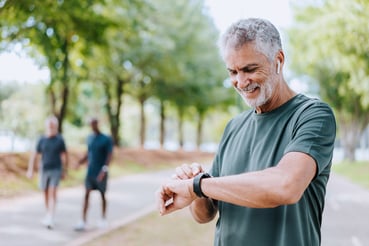 Improving your running time and efficiency can seem overwhelming. Whether you are a beginner or well-seasoned runner there is always room for performance improvement.
Improving your running time and efficiency can seem overwhelming. Whether you are a beginner or well-seasoned runner there is always room for performance improvement..jpg?width=477&height=318&name=GettyImages-1143018176%20(1).jpg) It isn’t a secret that as a person ages, there is an increased risk of falling. While there are a few different reasons this risk can increase, we will focus on what impacts a person’s ability to
It isn’t a secret that as a person ages, there is an increased risk of falling. While there are a few different reasons this risk can increase, we will focus on what impacts a person’s ability to 
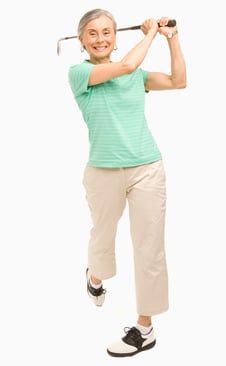 Most folks who have ever participated in balance training know that most exercises seem to involve only the legs. While it is important to focus on our lower extremities during our training, it is important to incorporate the use of our arms for more functional and effective training. Why? Because this will have more real-world applications! For example, practicing single leg stance is important for improving balance but most of us are not going to be in a situation where we must stand on one leg for an extended period of time. We will, however, be shifting our weight from one leg to another, swinging our arms like we do when walking, taking the stairs, dancing, or cleaning the house in real world daily activities.
Most folks who have ever participated in balance training know that most exercises seem to involve only the legs. While it is important to focus on our lower extremities during our training, it is important to incorporate the use of our arms for more functional and effective training. Why? Because this will have more real-world applications! For example, practicing single leg stance is important for improving balance but most of us are not going to be in a situation where we must stand on one leg for an extended period of time. We will, however, be shifting our weight from one leg to another, swinging our arms like we do when walking, taking the stairs, dancing, or cleaning the house in real world daily activities.
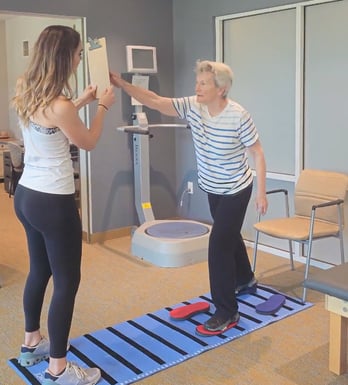 What is great about practicing balance is that there are multiple ways to do it including the utilization of various machines. Within senior living, evaluating equipment options can be a helpful starting point to developing a comprehensive fall prevention program for residents. In this two-part blog series, we’ll be covering investment pieces to incorporate in your fitness center’s fall prevention programming as well as more budget-friendly options if you are looking for more cost-effective options to give your
What is great about practicing balance is that there are multiple ways to do it including the utilization of various machines. Within senior living, evaluating equipment options can be a helpful starting point to developing a comprehensive fall prevention program for residents. In this two-part blog series, we’ll be covering investment pieces to incorporate in your fitness center’s fall prevention programming as well as more budget-friendly options if you are looking for more cost-effective options to give your 
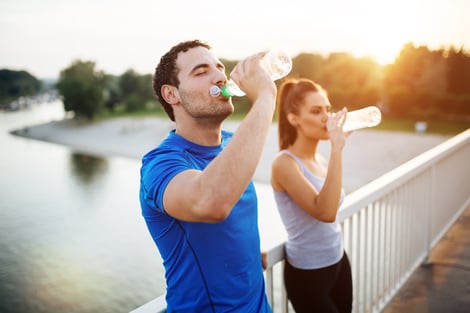 With the warmer summer months, it's the most prominent time when dehydration can become a big health issue and roadblock, especially if you are exercising outdoors. The heat and humidity can make it difficult to maintain a healthy balance of fluids in the body. That's why staying hydrated is not only important for your health but also for your fitness goals.
With the warmer summer months, it's the most prominent time when dehydration can become a big health issue and roadblock, especially if you are exercising outdoors. The heat and humidity can make it difficult to maintain a healthy balance of fluids in the body. That's why staying hydrated is not only important for your health but also for your fitness goals. .jpg?width=437&height=291&name=GettyImages-482404660%20(1).jpg) Regular physical activity is a major key when comes to living a healthy lifestyle and has many benefits. The biggest benefit is that physical activity helps improve your overall health overtime.
Regular physical activity is a major key when comes to living a healthy lifestyle and has many benefits. The biggest benefit is that physical activity helps improve your overall health overtime.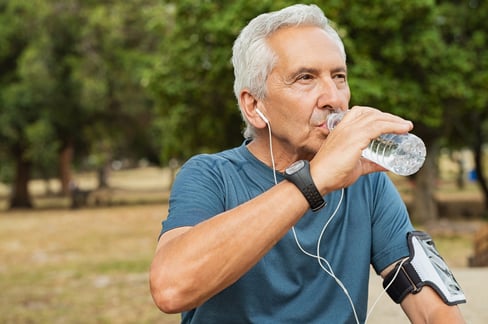 If music is good for the mind, and exercise is good for the body why not combine the two at the same time?
If music is good for the mind, and exercise is good for the body why not combine the two at the same time?.jpg?width=557&name=Raw%20Foods%20GettyImages-502130675%20(1).jpg)

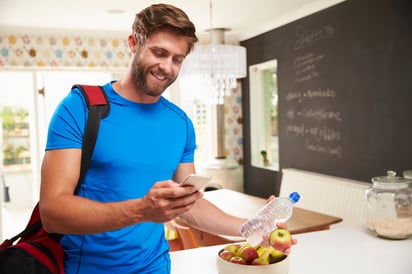 Lots of research has been done over the years to figuret out the best recipe for success when it comes to weight loss. Diet alone? Exercise alone? Or a combination of both? It should come as no surprise that the key for weight loss and keep it off is to combine a low-fat, lower-calorie diet with an exercise routine.
Lots of research has been done over the years to figuret out the best recipe for success when it comes to weight loss. Diet alone? Exercise alone? Or a combination of both? It should come as no surprise that the key for weight loss and keep it off is to combine a low-fat, lower-calorie diet with an exercise routine. 